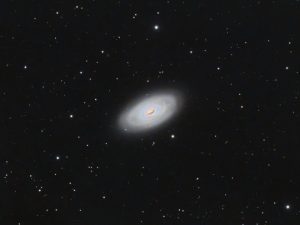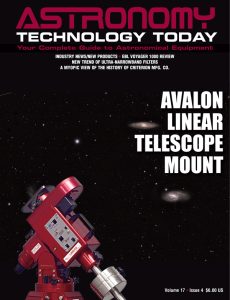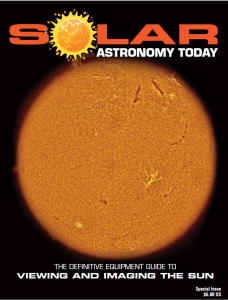The next Masters of PixInsight Workshop is titled “Photons to Photos #13” and will be hosted virtually on June 6, 2023 at 7 PM EDT by Warren Keller and Dr. Ron Brecher who will demonstrate a complete image workflow from beginning to end.
 Attendees will be supplied with the Data Sets and Process Icons so you can process along and observe the steps and techniques used. You’ll be able to “Look over their shoulder” and get a peek into how and why they make their image processing decisions.
Attendees will be supplied with the Data Sets and Process Icons so you can process along and observe the steps and techniques used. You’ll be able to “Look over their shoulder” and get a peek into how and why they make their image processing decisions.
In Photons to Photos #13, they will combine data from two different cameras and telescopes to produce a detailed deep-sky portrait that you’d be proud to hang on your wall. The subject is the Black Eye Galaxy, M64, which is well placed for imaging in the Spring.
This workshop will be delivered in two parts:
Part 1 – Mosaics: Have you ever wanted to image a deep-sky object that was larger than your camera’s field of view? Using a smaller telescope is an option, but usually at the expense of resolution. Instead, you can stitch multiple panes together to make a seamless mosaic of a larger region. The team will show you how to use these essential mosaic-making tools:
– StarAlignment: Options and settings used for making a mosaic template and preparing panes for merging into a mosaic.
– GradientMergeMosaic: To combine multiple mosaic panes prepared with StarAlignment.
Part 2 – Special Sauce: You can add these steps to your workflow, as appropriate, to further enhance your images. The team will show where they fit in with the workflow:
– MorphologicalTransformation: Change the size and/or shape of stars.
– ExponentialTransformation: Bring up faint details outside your main object.
– Repaired HSV Separation Script: Correct color mismatches in star centers.
These techniques can be used with narrowband data from one-shot color and monochrome astronomical cameras, as well as DSLRs.
As the name suggests, the Masters of PixInsight Workshop series provides a learning experience for PixInsight which is an advanced image processing software platform. It has been designed specifically for astrophotography and other technical imaging fields. PixInsight is a modular, open-architecture system where the entire processing and file handling capabilities are implemented as external installable modules.
PixInsight has been ported as a native 64-bit application to Linux, macOS and Windows operating systems. PixInsight is a strongly multithreaded environment able to exploit all processors and processor cores available on modern hardware.
PixInsight is both an image processing environment and a software development framework. The core PixInsight application integrates three user interfaces: a graphical interface, a command-line interface, and a scripting interface based on the JavaScript language. As a development platform, PixInsight provides the PixInsight Class Library (PCL), an ISO C++ framework for development of PixInsight modules, and the PixInsight JavaScript Runtime (PJSR), an ECMA 262-5 compliant environment readily available in the core PixInsight application.
The cost of the Masters of PixInsight Workshop is $35. You can learn more here.

 And to make it easier for you to get the most extensive news, articles and reviews that are only available in the magazine pages of Astronomy Technology Today, we are offering a 1-year magazine subscription for only $6! Or, for an even better deal, we are offering 2 years for only $9. Click here to get these deals which only will be available for a very limited time. You can also check out a free sample issue here.
And to make it easier for you to get the most extensive news, articles and reviews that are only available in the magazine pages of Astronomy Technology Today, we are offering a 1-year magazine subscription for only $6! Or, for an even better deal, we are offering 2 years for only $9. Click here to get these deals which only will be available for a very limited time. You can also check out a free sample issue here.
The Sun is more active than it’s been in years and if that’s not enough, we have the Annular Solar Eclipse on October 14, 2023 and the Total Solar Eclipse on April 8, 2024! If you’d like to learn more about the technology behind solar observing, solar imaging and more, you can check out our free publication, “The Definitive Guide to Viewing and Imaging the Sun”. You don’t have to sign up or provide any information, simply click here and enjoy reading!

